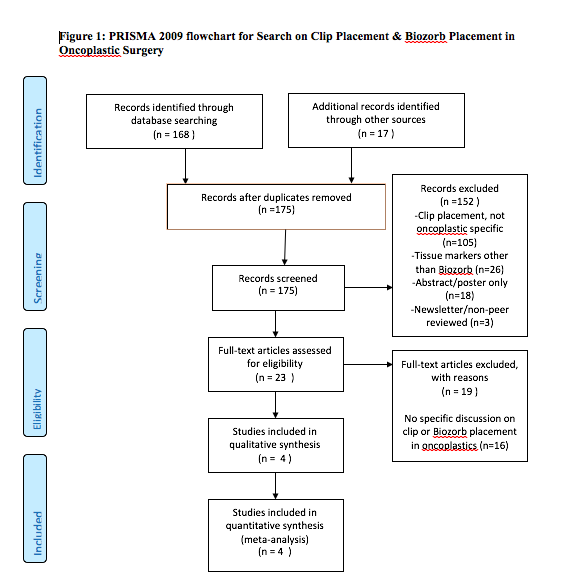The Cost-Effectiveness of the Biozorb "Implant" in Oncoplastic Breast Surgery
Ramy Rashad, BA1, Kathryn Huber, MD, PhD2, Abhishek Chatterjee, MD, MBA2.
1Tufts University School of Medicine, Boston, MA, USA, 2Tufts Medical Center, Boston, MA, USA.
Background:
The Biozorb device is a relatively new technology being marketed to breast surgeons as an "implant" for dead space and a "marker" for tumor location when performing oncoplastic surgery. Very little has been written in the plastic surgery literature about this device. Marketing for Biozorb has implicit associations with oncoplastic local tissue rearrangement in the ipsilateral breast after the lumpectomy has occurred. With such tissue manipulation, there lies a challenge in marking the tumor bed for adjuvant radiation therapy planning. Two competing techniques in doing so exist and involve the traditional placement of metal clips in the surgical tumor bed or the newer technique of placing a Biozorb marker in the tumor bed.
Methods:
Our goal was to inform the plastic surgery community of this new device being marketed with oncoplastic surgery to breast surgeons, and to perform a cost-utility assessment to see which tumor bed marking approach is more cost-effective. Costs of each marking technique based on device list prices were compared. A comprehensive literature review was performed to assess clinical outcomes. We then assessed if an approach either dominated or had an incremental cost-utility ratio of less than $50,000/QALY since either would signify cost-effectiveness.
Results:
From a cost comparison, the Biozorb marker ($1250) was far costlier than the clip applier device ($50). Our PRISMA search (Figure 1) reviewed 133 articles for clip placement and 42 articles for Biozorb placement in oncoplastic surgery with 2 clip placement articles and 2 Biozorb articles meeting criteria. The available data for either marking technique suggests reasonable tumor bed identification for adjuvant radiation treatment without clear clinical advantages supporting one technique over the other. Many search results were in abstract form only or lacked a cohort comparison and could not differentiate the described aesthetic advantages of Biozorb "implant" from the local tissue rearrangement performed at the same time. Overall clinical equivalence in the setting of a clear cost advantage suggests dominant cost-effectiveness in favor of clips.
Conclusion:
Using metal clips to identify the tumor bed in oncoplastic surgery is dominant and more cost-effective over the Biozorb technique as clips cost substantially less while both techniques reasonably identify the tumor bed. 
Back to 2018 Posters




